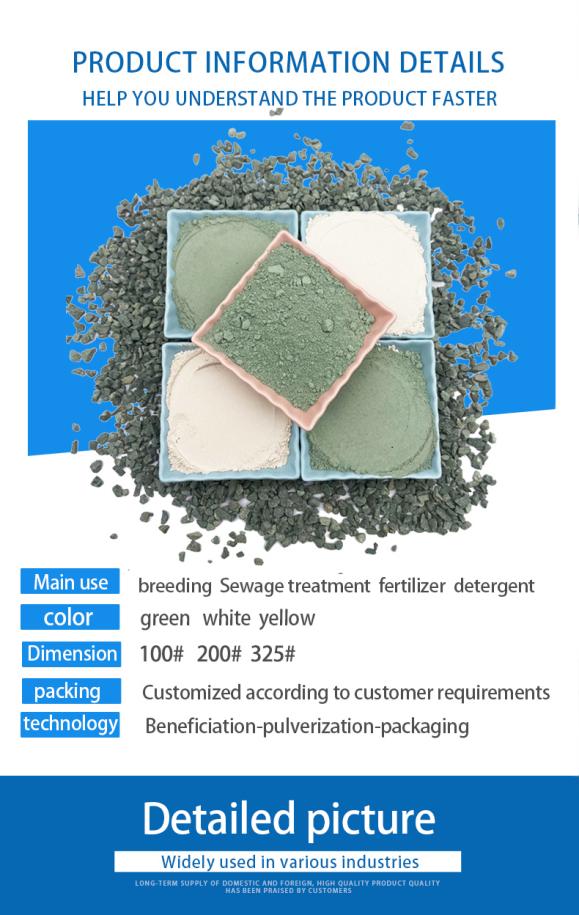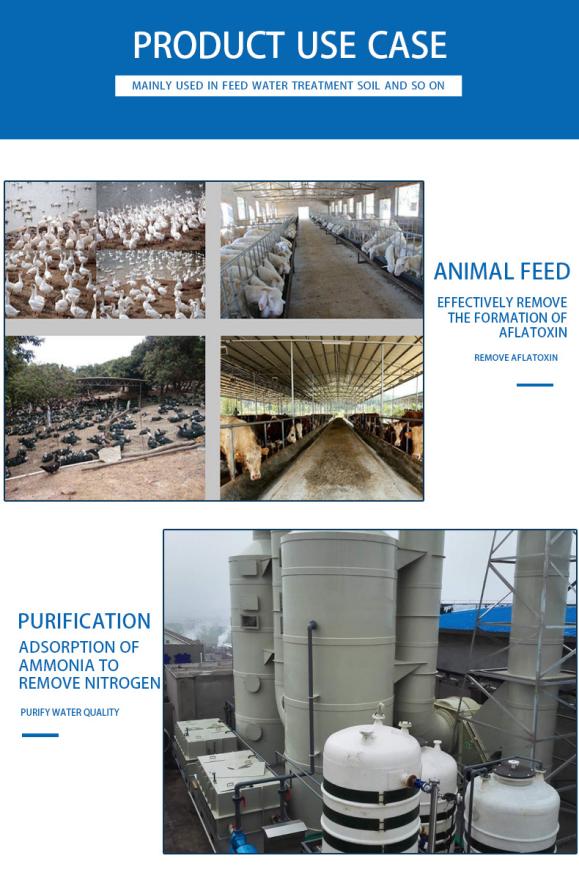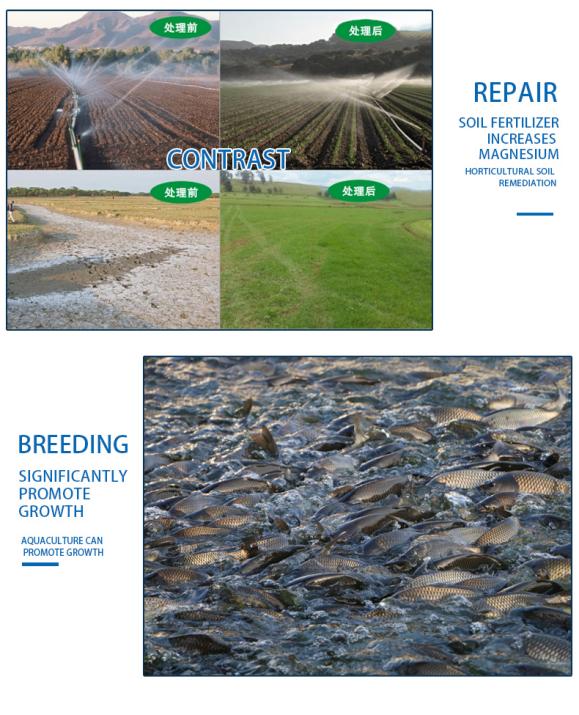
Zeolite er ótrúlegt steinefni
Natural zeolite is an emerging material that is widely used in industry, agriculture, defense and other sectors, and its use is constantly expanding. Zeolite is used as an ion exchanger, adsorption separating agent, desiccant, catalyst, cement mixture.
Í jarðolíu- og efnaiðnaði er það notað sem hvatandi sprunga, vatnssprunga og efnafræðileg sundrun, umbætur, alkýlering og óhlutfall olíuhreinsunar; Gas- og vökvahreinsunar-, aðskilnaðar- og geymslumiðlar; Harðvatnsmýking, sjóafsöltun; Sérstök þurrkefni (þurrt loft, köfnunarefni, kolvetni osfrv.). Í léttum iðnaði fyrir pappírsgerð, gervigúmmí, plast, kvoða, málningarfylliefni og gæðaliti. Í landvörnum, geimtækni, ofurtæmitækni, orkuþróun, rafeindaiðnaði osfrv., er það notað sem aðsogsaðskilnaðarefni og þurrkefni. Í byggingarefnaiðnaðinum er það notað sem sementvatnsharðvirkt virk blanda, sem brennir gerviljóssamlagi, gerir léttar og sterkar plötur og múrsteina. Notað sem jarðvegsbreyting í landbúnaði getur það gegnt hlutverki við áburð, vökvasöfnun og forvarnir gegn sjúkdómum og meindýrum. Í alifuglaiðnaðinum geta aukefni og svitalyktareyðir sem notuð eru sem fóður (svín, hænur) stuðlað að vexti búfjár og bætt lifunarhlutfall kjúklinga. Hvað varðar umhverfisvernd er það notað til að meðhöndla úrgangsgas og frárennslisvatn, fjarlægja eða endurheimta málmjónir úr frárennslisvatni og úrgangsvökva og fjarlægja geislavirk efni í frárennslisvatni.



From a practical point of view, zeólít can be adapted for a variety of uses:
(1) Aquaculture: ammonia filtration in fish hatcheries; Biological filter media. In fish farms, the water load of fish can be very high. This leads to rapid contamination of the water, so the concentration of toxic substances increases rapidly. Therefore, a large amount of water purification is necessary. Zeolite can be used in various steps of the purification process: as a secondary filtration unit after biological purification and/or aeration; as a supporting material for bacteria; As a filter medium, it is used to remove solids and suspended particles and simultaneously remove unwanted ions.
(2) Landbúnaður: lyktareftirlit; umhverfiseftirlit með dýrum í haldi; Búfjárfóðuraukefni. Í Austur-Evrópu er japanskt og kúbverskt zeólít venjulega notað í landbúnaði. Með því að bæta um 5% við fóður búfjár dregur úr losun ammoníaks og lyktar, bætir skilvirkni fóðurs, hjálpar til við frásog sveppaeiturs og getur veitt snefilefni. Fyrir nokkrum árum notaði NASA næringarríkt zeólít sem hæglosandi áburð.
(3) Garðyrkja: leikskóli, gróðurhús; Blómasalur; grænmeti/jurtir; Lauf; ígræðsla trjáa og runna; torfgras jarðvegsbreyting; uppgræðsla, uppgræðsla, landmótun; skógrækt (skógrækt, plantekrur); Vatnsræktunarmiðill.
(4) Household products: household odor control; Pet odor control. Domestic uses mainly involve the odor and liquid adsorption characteristics of zeólít. A range of gases, including formaldehyde and hydrogen sulfide, have been shown to be adsorbed by zeolite.
In the United States, zeólít is often added to small air filters to adsorb such gases and reduce allergy problems. It can be used to dry sneakers, reduce moisture in the wardrobe, and is often used to absorb cigarette odors. A very useful carpet cleaner based on zeólít. The most common use of zeólít in the home is as a fat absorbent for cat litter and barbecue. It is also used to adsorb ammonia in fish tanks. When the waste product is fully utilized, it is an ideal addition to compost, helping to regulate and ultimately contribute to soil moisture and nutrient retention.
(5) Industrial products: absorbent of oil and spillage; Gas separation. Industrial uses focus on the liquid and vapor absorption properties of zeólít. It can be ideal for particulate oil/chemical spill cleanup; It is inert and safe to use.
(6) Geislavirkur úrgangur: lagfæring/hreinsun á staðnum.
(7) Vatnsmeðferð: vatnssíun; Fjarlæging þungmálma; skólphreinsun sundlaugar; Fjarlæging ammóníaks/ammoníums úr seyru/afrennsli sveitarfélaga; Fjarlæging þungmálma; Útskolunarsvæði rotþróa o.fl.
Deila
-
Chlorolite is obtained from zeolite ore by high temperature sintering and dehydration treatment.FréttirMay.24,2024
-
The main component of talc is magnesium silicate containing talc water,FréttirMay.22,2024
-
Alumina is a high-hardness compound commonly used in the manufacture of refractory materials.FréttirMay.20,2024
-
Hollow glass beads are tiny, hollow glass spheres,FréttirMay.16,2024
-
Fused quartz is the amorphous (glassy) state of silicon oxide (quartz, silica).FréttirMay.09,2024
-
Vermiculite is a natural, inorganic, non-toxic mineral that expands under high temperature.FréttirApr.09,2024






